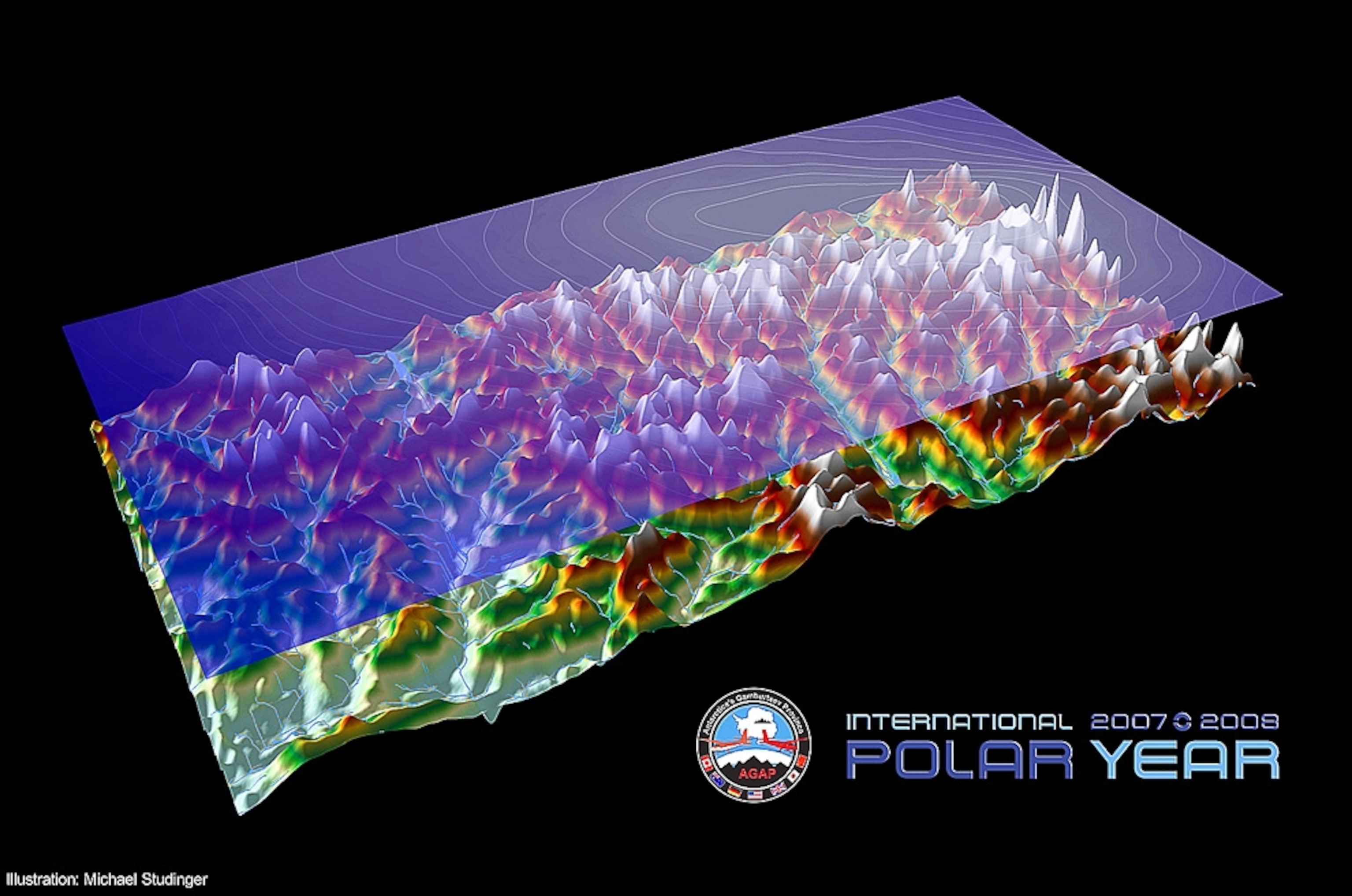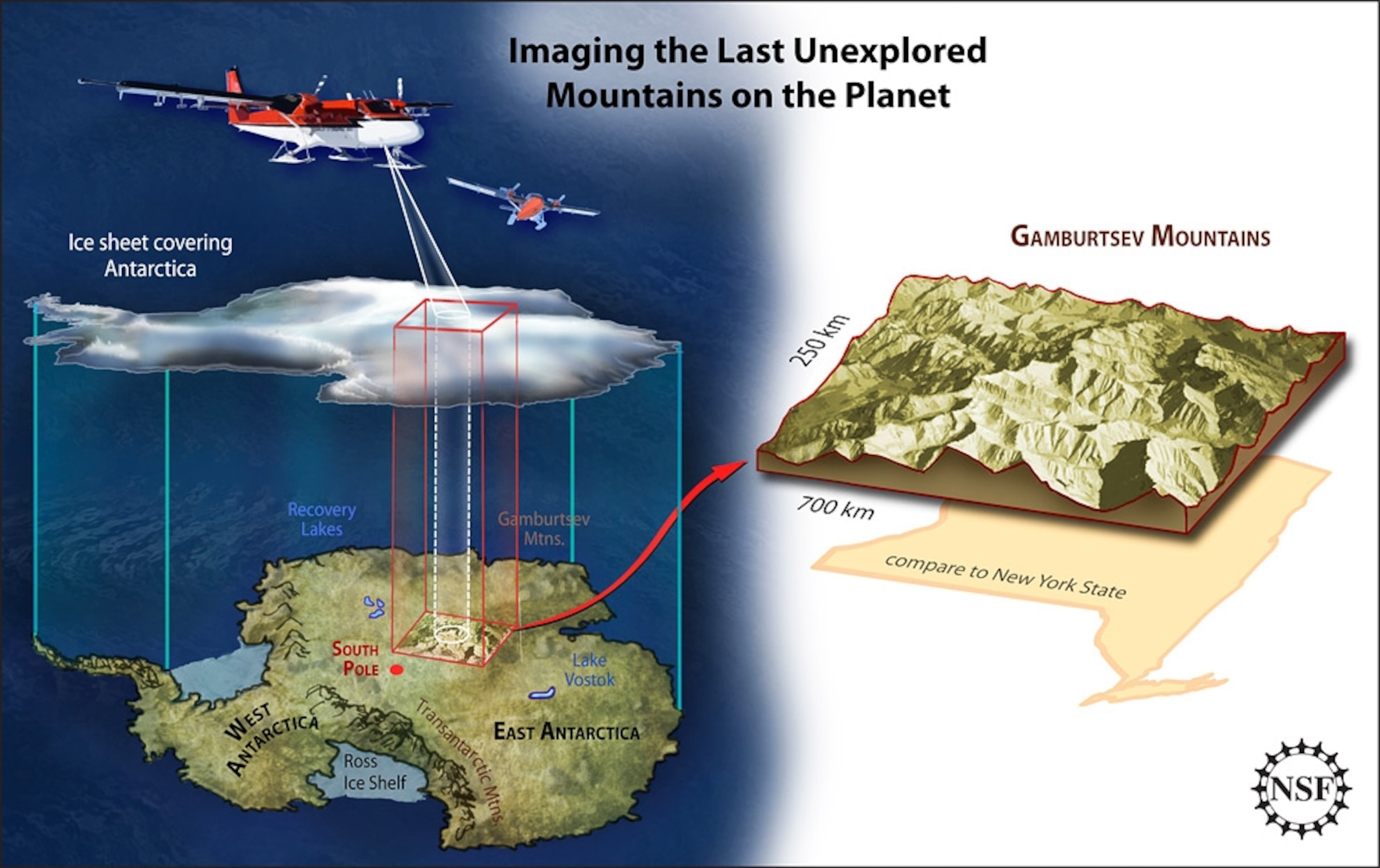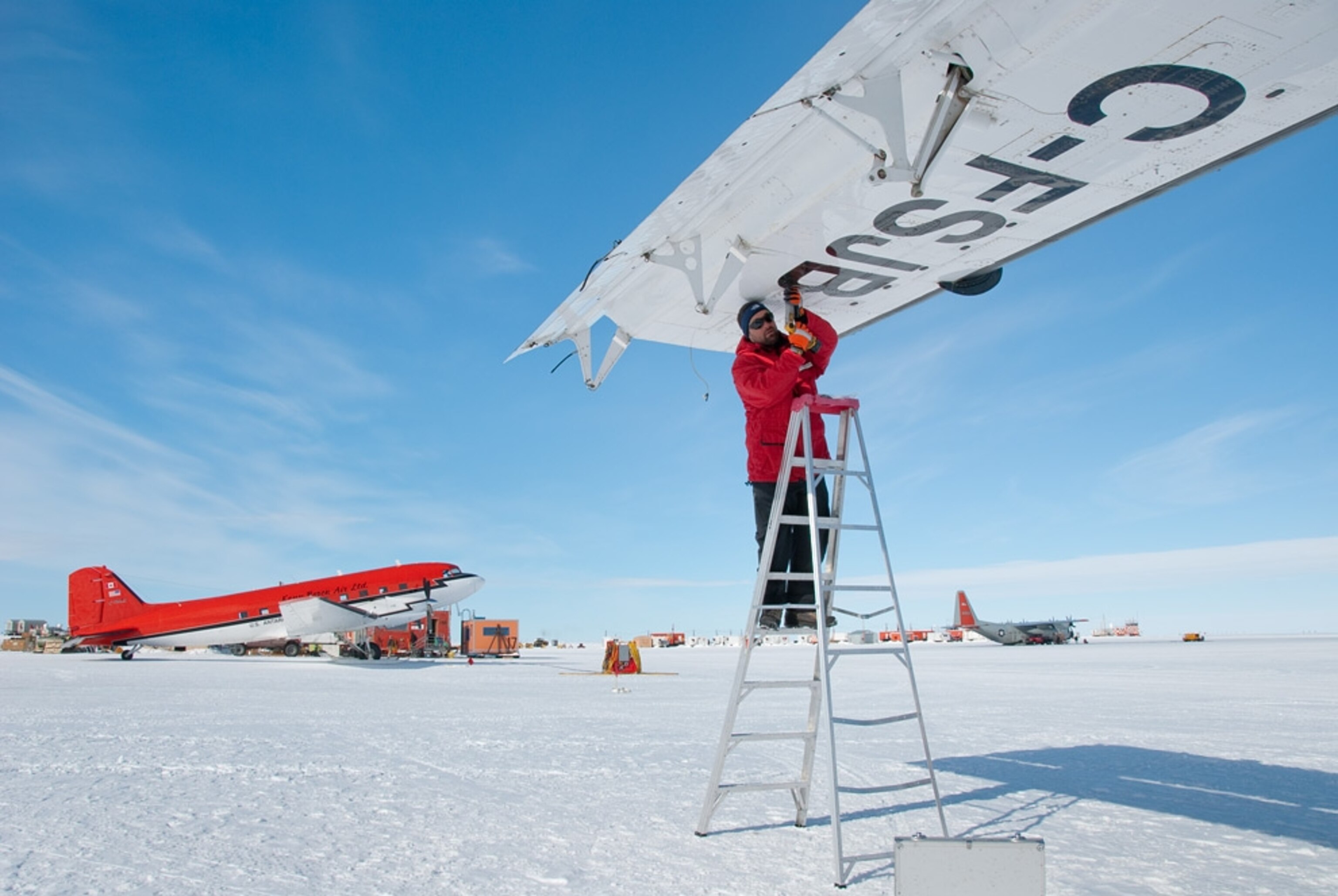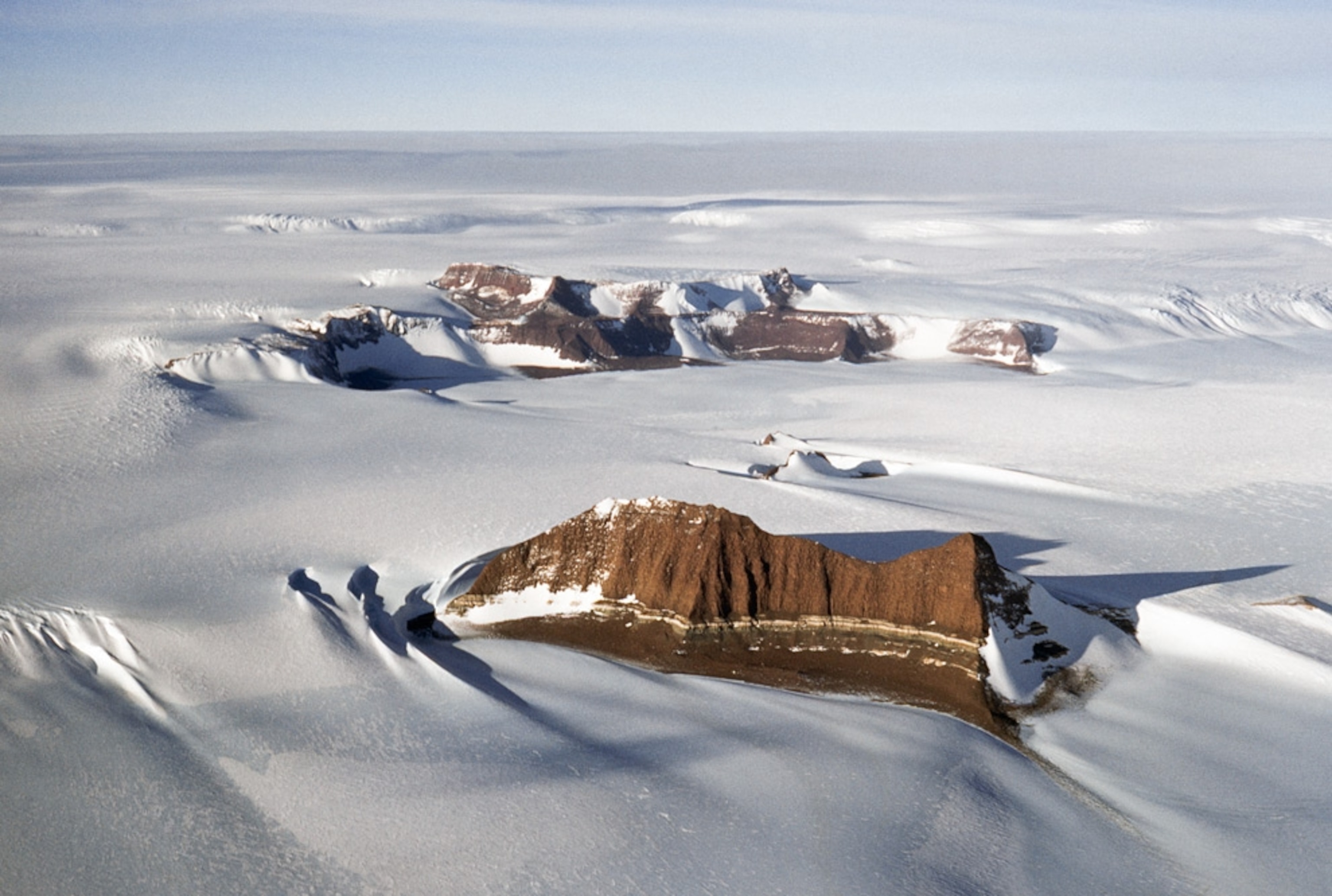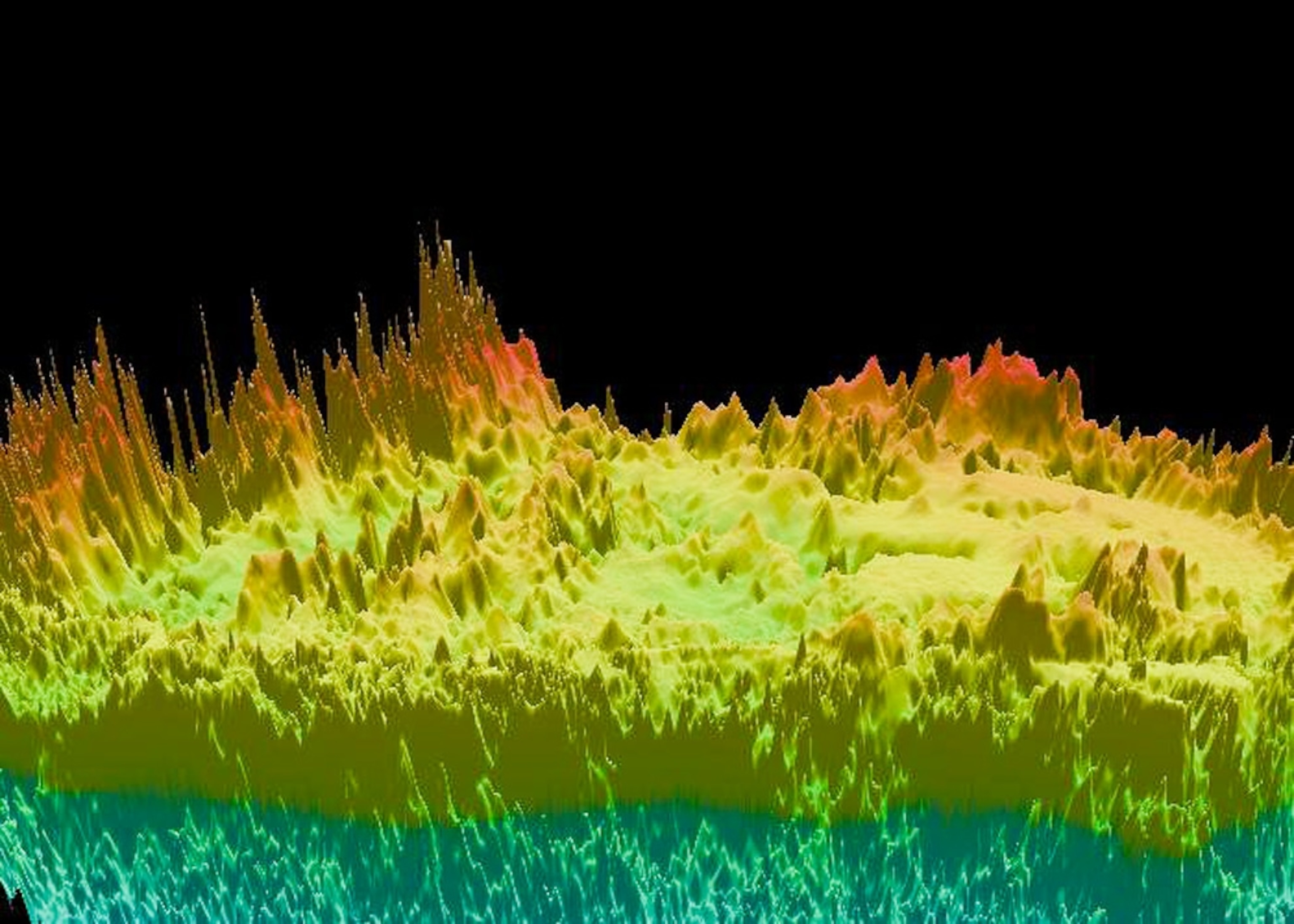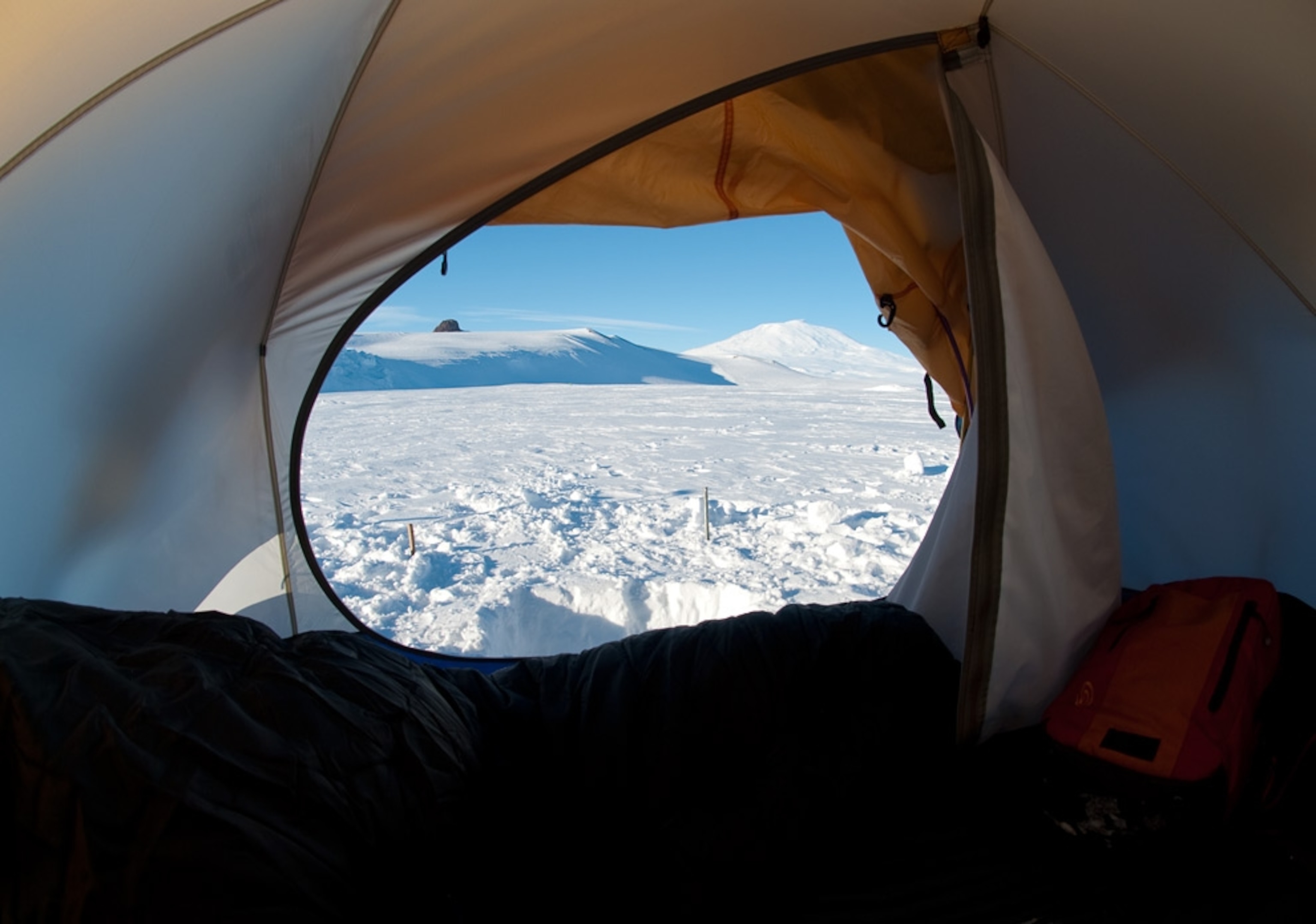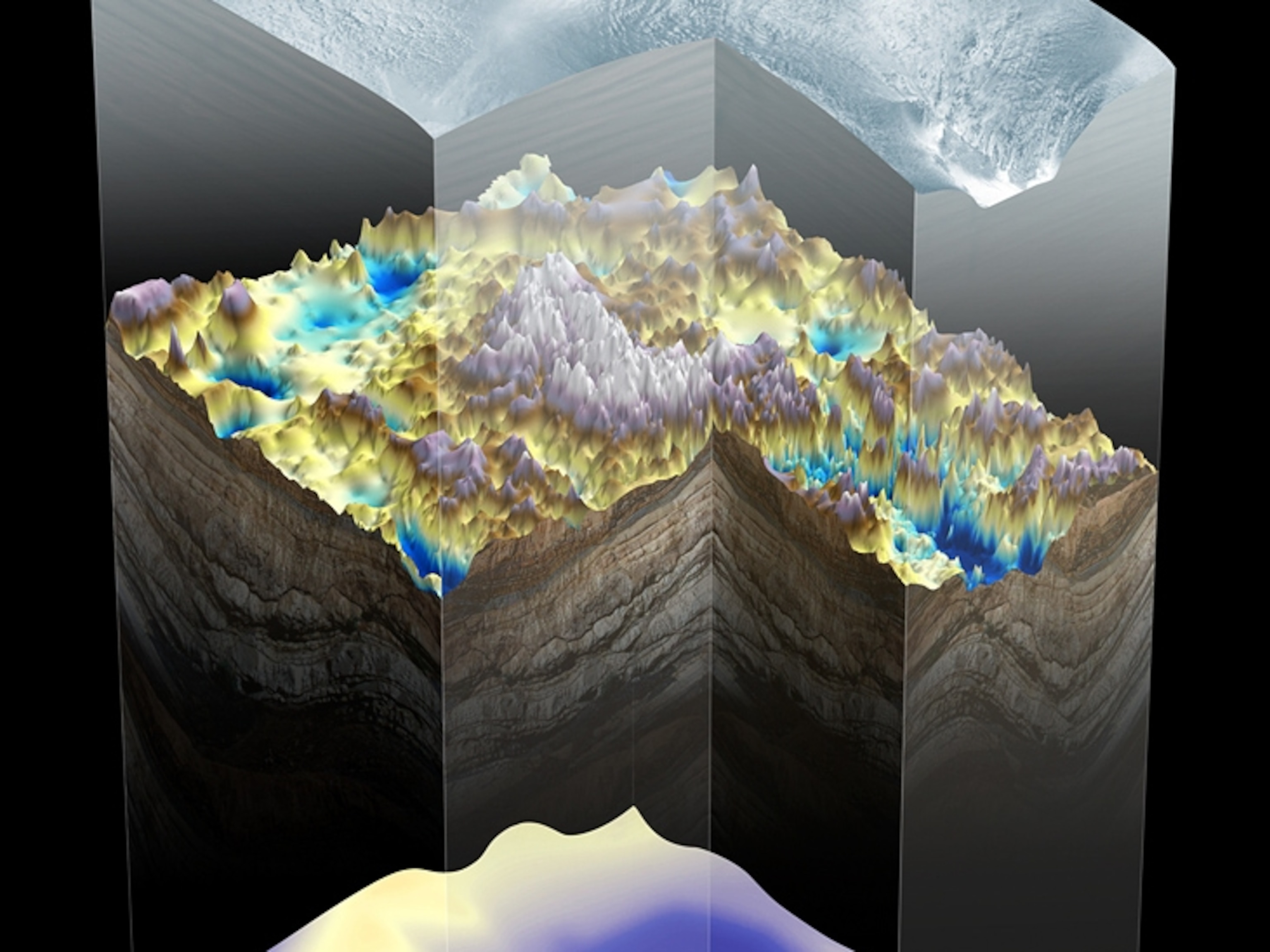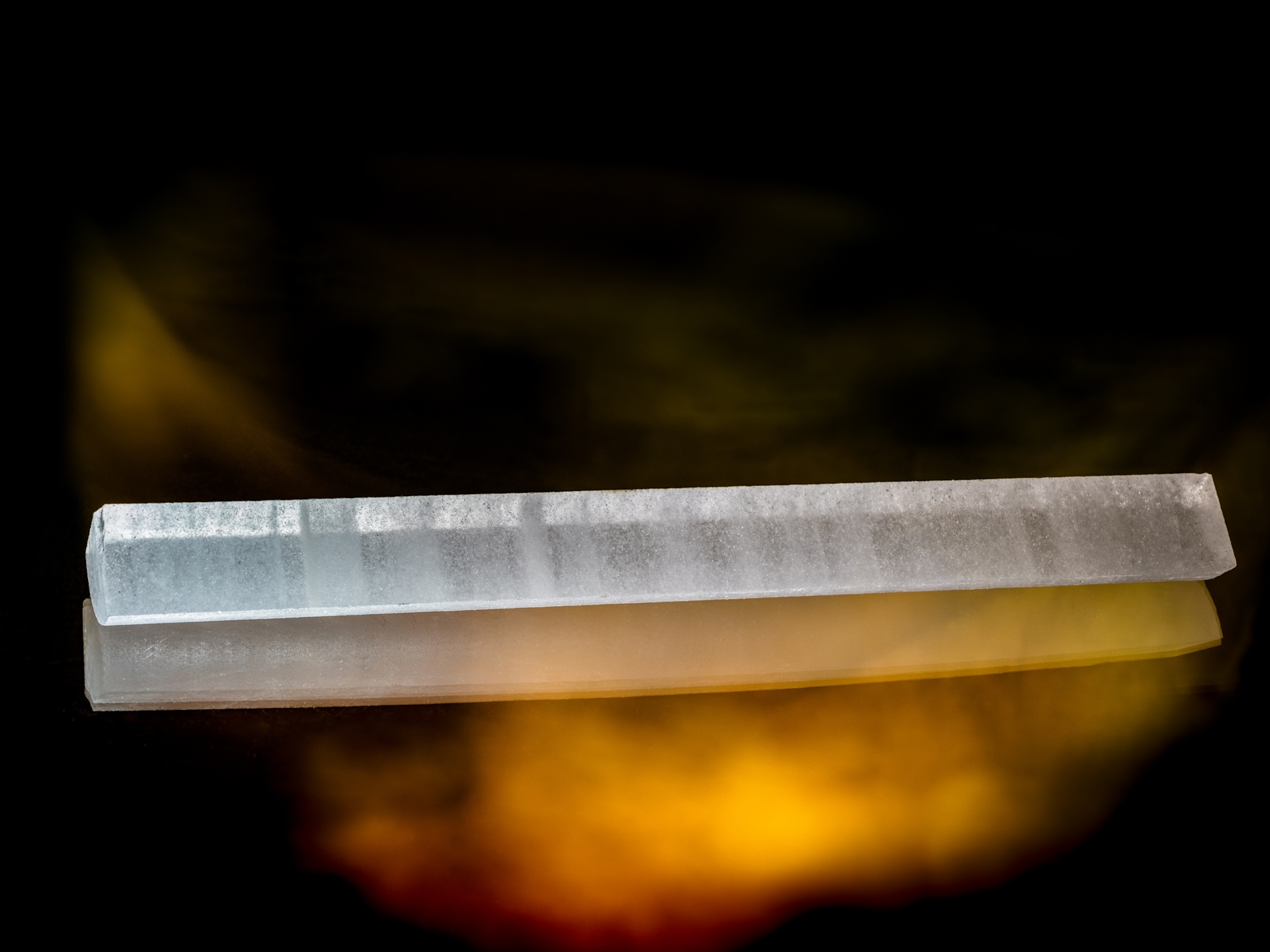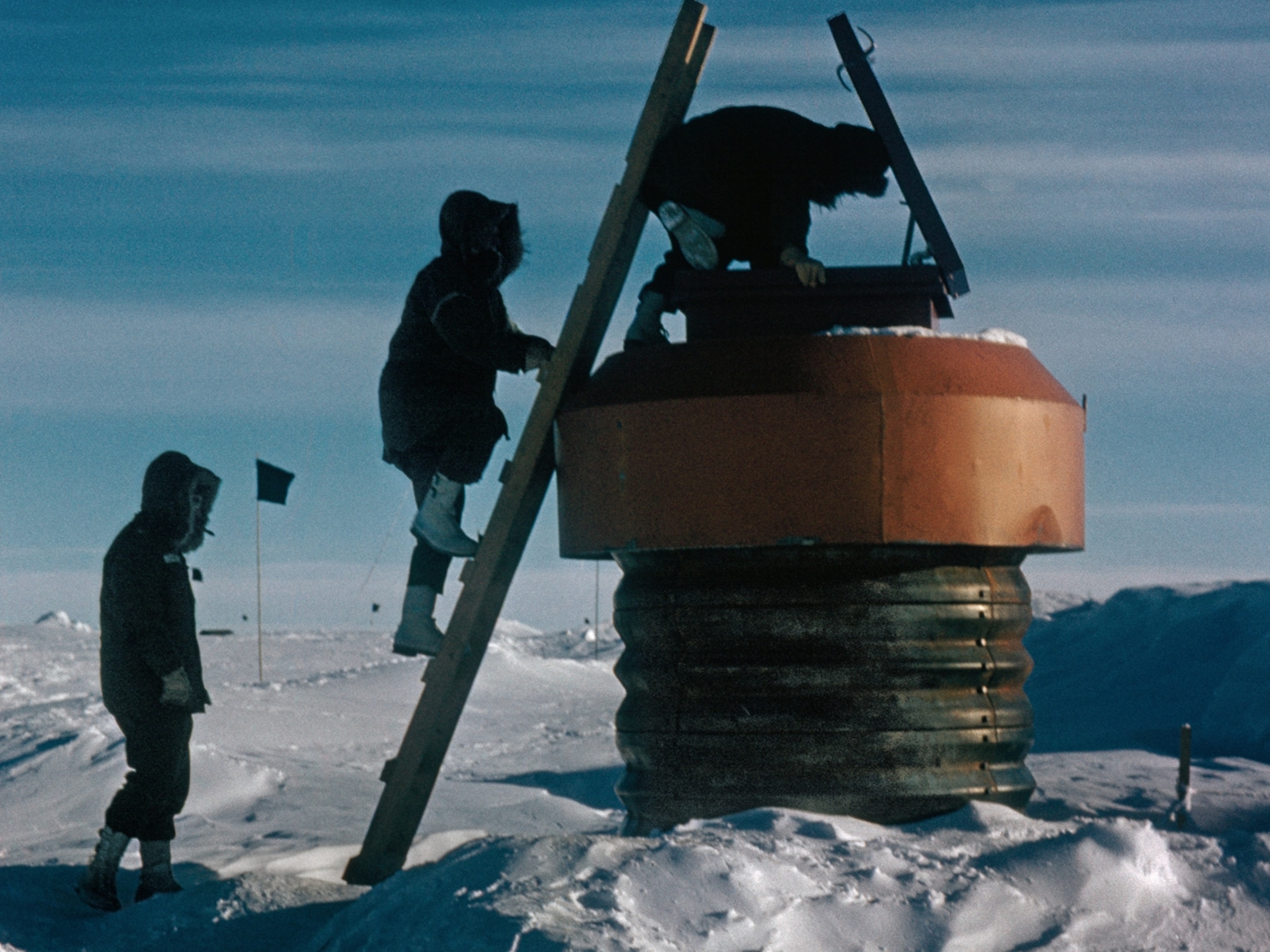Hidden miles beneath the surface of an ice sheet (shown in blue), the so-called ghost peaks in the middle of Antarctica are finally coming into view, researchers announced last month.
Ground-penetrating radar results from 2008 and 2009 have made possible the most detailed images yet (such as the one above) of the Gamburtsev Mountains—and it's a surprisingly serrated range, the experts say.
The radar-based images reveal a slightly exaggerated view of the jagged, roughly 8,500-foot-tall (2,600-meter-tall) peaks. The range likely formed millions of years before becoming covered in Antarctic ice, said geophysicist Robin Bell of Columbia University's Lamont-Doherty Earth Observatory, who led America's Gamburtsev Province Project as part of the International Polar Year (2007-08) science program.
In size and shape, Bell said, the Gamburtsevs resemble the United States' Cascade Range, home of Mount Rainier (picture).
(Also see: "Mystery Deepens Over Unseen Antarctic 'Alps.'")—Richard A. Lovett
